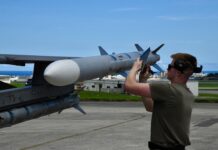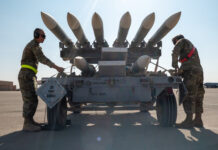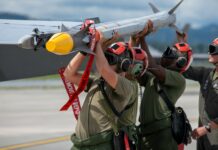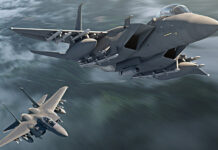
A Return to Air-to-Air Combat?
David Saw
The fact that Western air forces would achieve and retain air dominance has become the accepted reality of air operations in recent years. The mission spectrum that results from the asymmetric conflicts that have become par for the course for the US and its allies have no place for air-to-air missions, simply because there was no air threat of any serious nature to face. With no peer or even near-peer competitor, Western air forces have not really needed to focus on air-to-air threats or capabilities. That situation is now starting to change.
One event that changed everything in the context of the European security situation was Russia’s invasion of Ukraine on 24 February 2022. Any pre-existing assumptions on the solidity of peace and security in Europe were swept aside. On the other hand, the fact that this conflict continues nearly 16 months later, has demonstrated the resilience of Ukraine and its military and exposed many unexpected, or perhaps ignored, weaknesses in the Russian military.

Credit: USAF
The fact that Russia conducted long-range air assault missions using helicopters and transport aircraft deep into the enemy rear in the initial period of the conflict, was clear proof that they did not expect any serious air threat. Yet, despite their numerical superiority, the Russian Air Force was unable to establish air dominance over Ukraine and the Ukrainian Air Force was able to demonstrate unexpected powers of recovery.
Furthermore, the Russian Air Force had no conception that this conflict would last so long and had not taken the necessary steps to prepare for extended combat operations.
When looking at the lessons of air operations in the current Russo-Ukrainian conflict, there are unique circumstances that need to be taken into account. Both sides were fully aware of the operational doctrines and aircraft performance of their opponent, in the main both sides were also fully aware of the of the performance of most air-launched weapons in service with their opponent. Indeed, prior to the collapse of the Soviet Union, one of the main Soviet air-to-air missile (AAM) production sites was located in Ukraine. Post-Ukrainian independence, this missile production and support capability was retained by Ukraine.
What becomes evident when looking at the start of the conflict is that Russia appears to have assumed that it could rapidly establish air dominance without having to truly fight for it.
Confronting Reality
While it is obvious that materiel preparations for extended operations in Ukraine were insufficient in the context of both air and ground operations. Is that really a surprise after years of asymmetric conflicts against insurgents? In an air force environment, the main items to acquire would have been stand-off weapons in numbers suitable for low intensity conflict. In these circumstances, it is hardly likely that funding would have been put into place for a significant refresh of the AAM inventory, especially since there was no perceived need for adding to AAM capabilities, that was not the threat. Why invest in what you do not need?
Such logic is not confined to the Russian military, as evidenced by the discovery that Western nations were also happy to delude themselves that they had adequate war stocks for a conventional conflict. Again, years of reduced defence expenditures, added to participation in asymmetric conflicts had seen conventional capabilities diminished to a dangerous degree. How many European air forces would be able to rapidly generate a serious fighter force equipped with modern AAMs to undertake conventional high intensity operations in contested airspace? The sad but inevitable answer to that question is very few! Europe has become too used to meeting its airpower commitments in a limited manner, deploying aircraft in fives or tens to meet international obligations. How many air forces have the ability to do more than limited operations or have the ability to react quickly to conventional threats? The ability of far too many European air forces to contest and win air superiority has been degraded for far too long.
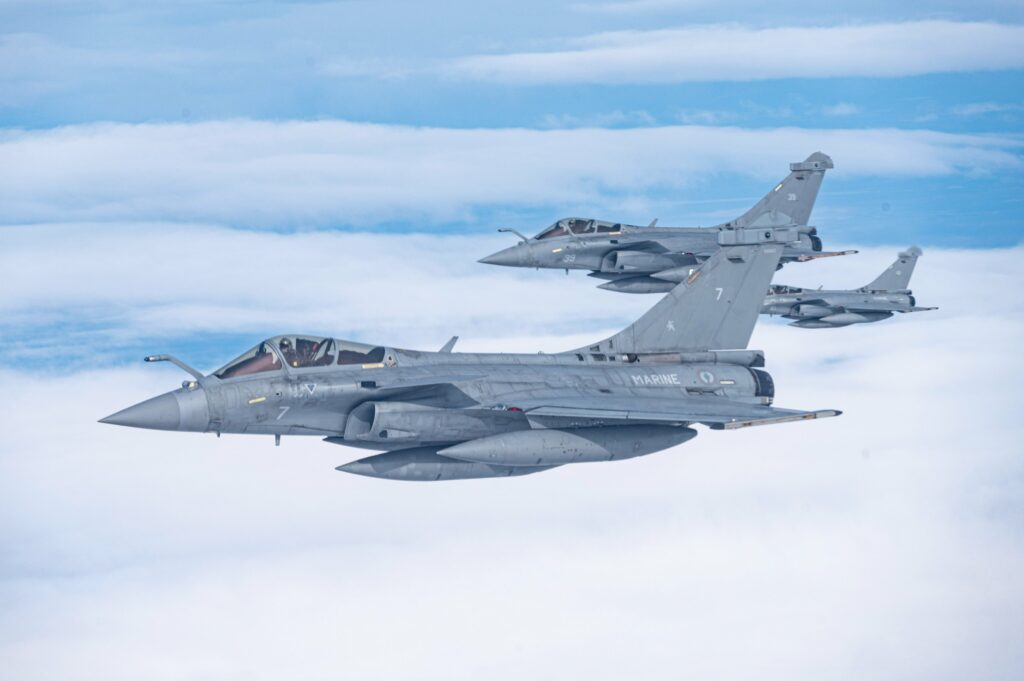
Credit: Armée de l’Air et de l’Espace
Of course Europe has always taken advantage of the fact that it can make its contribution in terms of airpower, with the US doing the heavy lifting and providing the majority of the capability. But what happens if that US safety blanket is no longer strong enough or no longer present? The US ‘Pacific Pivot’ should have been warning that European security is no longer the primary focus of the US. They increasingly see China as the primary challenger to the US-dominated security ecosystem. More concerning for Europe is the fact that US military-industrial capabilities are showing their limitations.
Once, it would have been simply inconceivable that US resources would have been severely stretched by providing support to a nation involved in a conventional conflict. Yet the War in Ukraine has demonstrated that the US defence-industrial base has its limits, and that supply chains for all sorts of systems from the simplest to the most sophisticated are not robust and increasingly vulnerable.
The Next Steps
The Ukrainian government has made it plain that it would like the US and Europe to supply it with combat aircraft so that it can continue contest the air over Ukraine. Reluctance to support Ukraine in this manner appears to be weakening, with Ukrainian pilots now receiving training on the F-16 from both the US and European nations in Europe. F-16s armed with western missiles have the potential to transform the air battle in Ukraine. The US has intimated that in the long-term it will supply Ukraine with the F-16, although whether these will new-build Block 70/72 variants or surplus US Block 50/52 variants has yet to be clarified. It is thought that the US would supply an AIM-9/AIM-120 weapons package with these aircraft.
At the moment though, much will depend on what numbers and what F-16 variants can be supplied. Another important issue will be the depth of AAM stocks in Europe and/or the US. Will enough weapons be available to support Ukrainian operations? Fortunately, the F-16 platform is highly versatile, and can accept a wide range of armaments, meaning that the burden would not have to fall entirely on the USA to supply AIM-9X and AIM-120 AMRAAM. Other viable air-to-air armament options previously tested on or in use with F-16 could potentially include ASRAAM, MICA, IRIS-T, Derby/I-Derby, and the Python-4/5.
This inevitably brings to the fore the issue of whether Europe could do more to support the Ukrainian Air Force and, if yes, would it be appropriate to supply the Eurofighter Typhoon and its associated air-launched weapons? A difficult conundrum, and one that extends to France and its will and ability to supply Ukraine with combat aircraft, whether they be Rafale or Mirage 2000. These are obviously political questions that leaders in France, Germany, Italy, Spain and the UK will have to resolve one way or another.

Credit: USAF
For governments and military forces across Europe the invasion of Ukraine should have been a wake- up call that European military capabilities had been allowed to diminish to an unacceptable level after the end of the Cold War. Now we have come to a point where the price to be paid for degraded defence capabilities becomes clear, we must consider the next actions which need to be taken and how rapidly they need to be enacted. The problem is that economic realities would seem to conspire against any serious efforts to truly revive Europe’s defensive capabilities in the short-term. The legacy of years of neglect needs to be overcome, before growing new capability can be entertained and that in itself will be expensive.
What needs to be understood is that conventional military threats have returned to become a major issue for European security planners, therefore steps must be taken to deliver a credible deterrent capability. To that end, a logical place to invest would be in having a credible air combat capability that can provide air dominance, the essential pre-requisite for success in conventional conflicts. There is no reason that Europe cannot achieve this, it has a highly capable air-launched weapons industrial base, added to the ability to build or otherwise acquire advanced combat aircraft on top of its existing inventory. It remains to be seen whether Europe will be ready to take the necessary steps to resurrect European air force capabilities as an essential step to re-invigorating conventional deterrence.
David Saw








